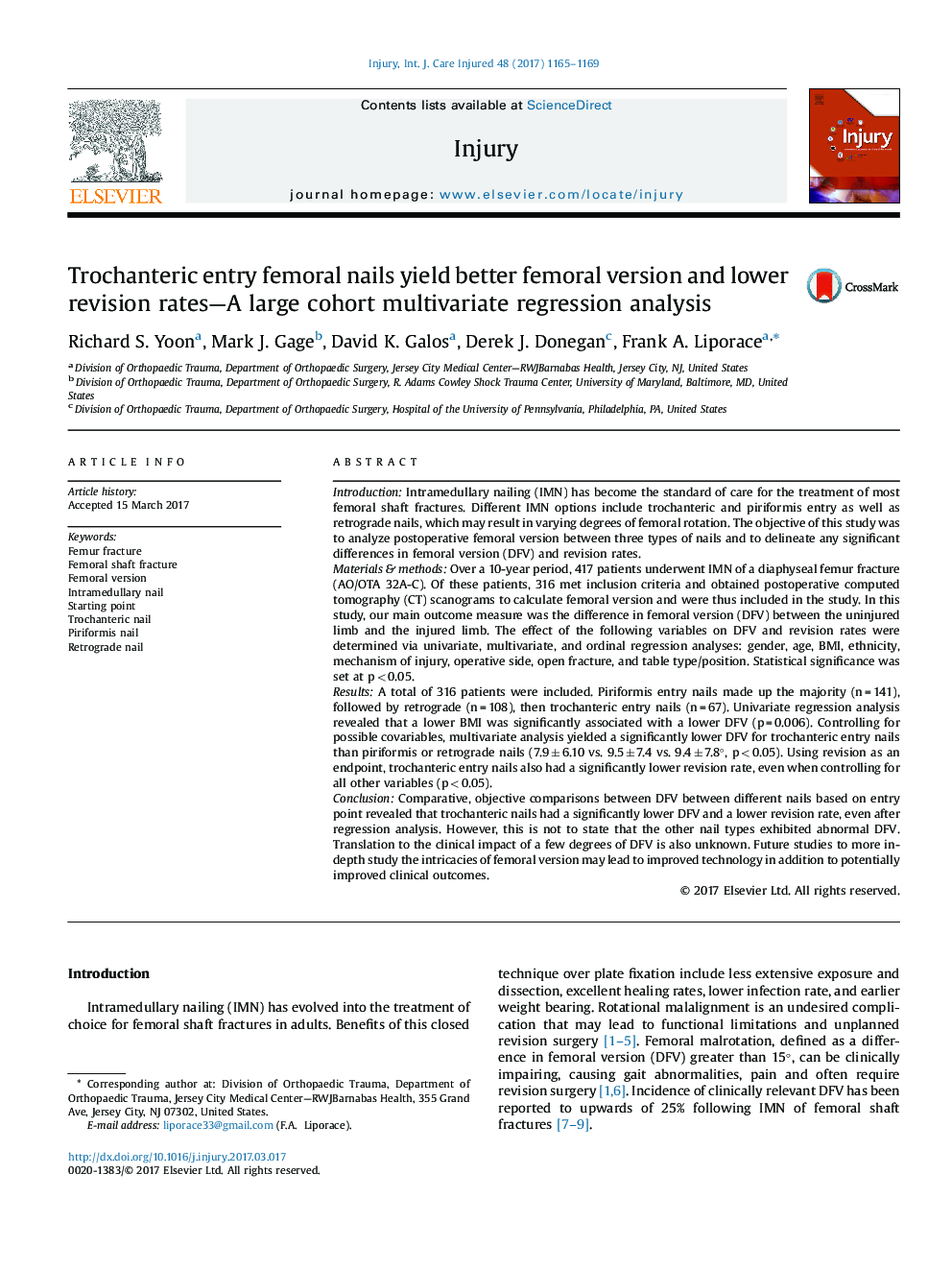| کد مقاله | کد نشریه | سال انتشار | مقاله انگلیسی | نسخه تمام متن |
|---|---|---|---|---|
| 5652489 | 1407217 | 2017 | 5 صفحه PDF | دانلود رایگان |
IntroductionIntramedullary nailing (IMN) has become the standard of care for the treatment of most femoral shaft fractures. Different IMN options include trochanteric and piriformis entry as well as retrograde nails, which may result in varying degrees of femoral rotation. The objective of this study was to analyze postoperative femoral version between three types of nails and to delineate any significant differences in femoral version (DFV) and revision rates.Materials & methodsOver a 10-year period, 417 patients underwent IMN of a diaphyseal femur fracture (AO/OTA 32A-C). Of these patients, 316 met inclusion criteria and obtained postoperative computed tomography (CT) scanograms to calculate femoral version and were thus included in the study. In this study, our main outcome measure was the difference in femoral version (DFV) between the uninjured limb and the injured limb. The effect of the following variables on DFV and revision rates were determined via univariate, multivariate, and ordinal regression analyses: gender, age, BMI, ethnicity, mechanism of injury, operative side, open fracture, and table type/position. Statistical significance was set at p < 0.05.ResultsA total of 316 patients were included. Piriformis entry nails made up the majority (n = 141), followed by retrograde (n = 108), then trochanteric entry nails (n = 67). Univariate regression analysis revealed that a lower BMI was significantly associated with a lower DFV (p = 0.006). Controlling for possible covariables, multivariate analysis yielded a significantly lower DFV for trochanteric entry nails than piriformis or retrograde nails (7.9 ± 6.10 vs. 9.5 ± 7.4 vs. 9.4 ± 7.8°, p < 0.05). Using revision as an endpoint, trochanteric entry nails also had a significantly lower revision rate, even when controlling for all other variables (p < 0.05).ConclusionComparative, objective comparisons between DFV between different nails based on entry point revealed that trochanteric nails had a significantly lower DFV and a lower revision rate, even after regression analysis. However, this is not to state that the other nail types exhibited abnormal DFV. Translation to the clinical impact of a few degrees of DFV is also unknown. Future studies to more in-depth study the intricacies of femoral version may lead to improved technology in addition to potentially improved clinical outcomes.
Journal: Injury - Volume 48, Issue 6, June 2017, Pages 1165-1169
